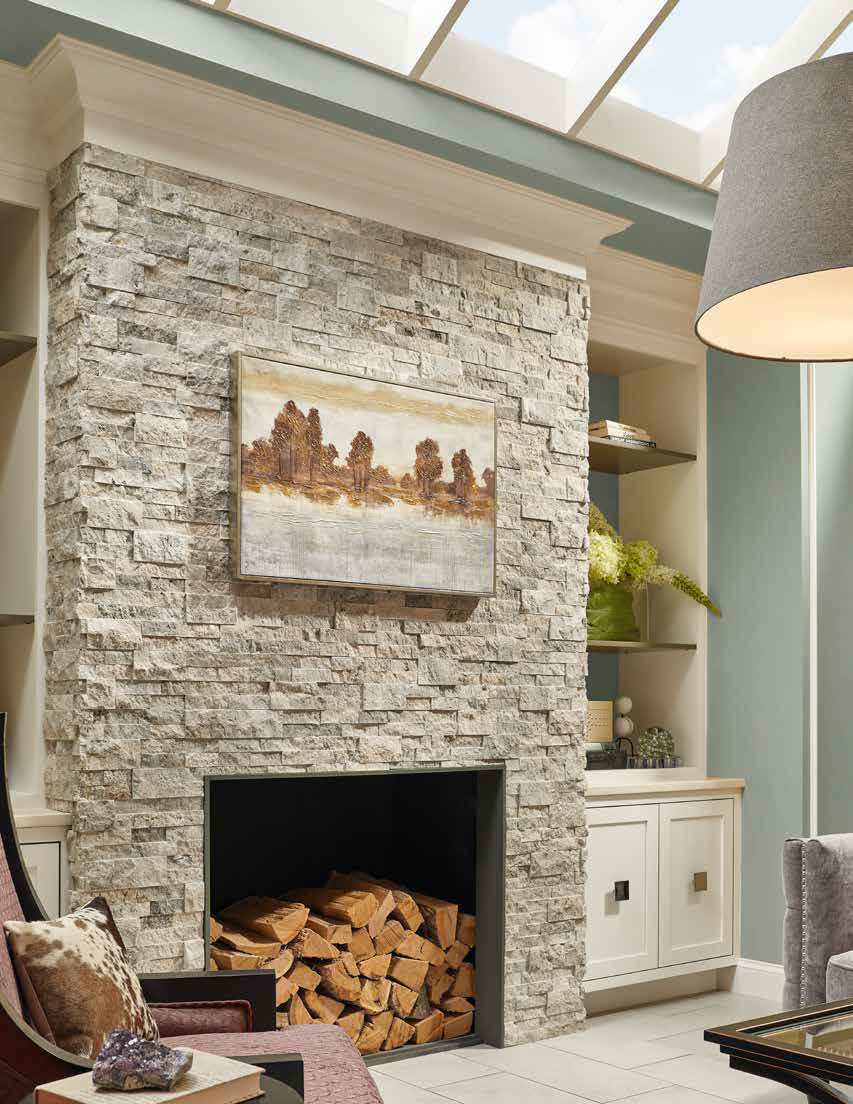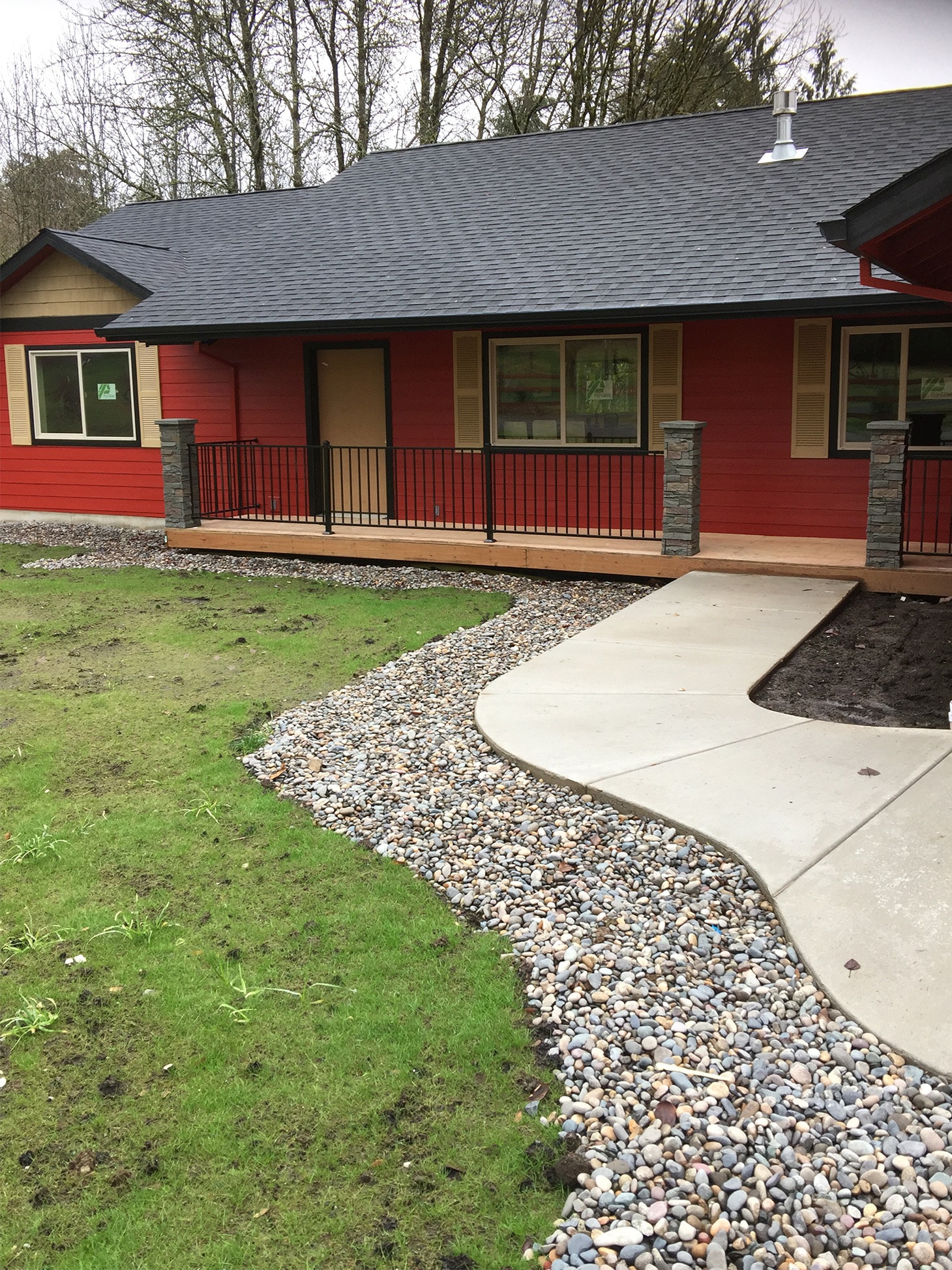Stacked stone panels offer an efficient way to create a striking fireplace feature without the cost and labor of traditional masonry. These lightweight panels replicate the look of natural stacked stone through detailed casting techniques using materials like polyurethane, fiberglass, or cultured stone. Available in various color palettes from warm earth tones to cool slate grays, they provide design flexibility for both modern and rustic interiors. The interlocking panel system simplifies installation, often requiring just adhesive and basic cutting tools rather than specialized masonry skills. Most panels measure 12-24 inches in height and 24-48 inches in width, with thicknesses varying from 1-3 inches to create dimensional depth.

Proper surface preparation ensures successful stacked stone panel installation. The fireplace surround must be clean, dry, and structurally sound before application. For brick or concrete surfaces, a thorough cleaning and light sanding improves adhesion. Wood-framed fireplaces require cement backer board as a stable substrate. Begin dry-fitting panels to plan the layout, staggering seams naturally like authentic stonework. Use a high-temperature construction adhesive rated for fireplace use, applying it generously to both the panel and wall surface. Many installers recommend starting at the bottom and working upward, using temporary supports until the adhesive cures completely. Leave appropriate clearance between panels and the firebox opening as specified by the manufacturer.

Design considerations elevate stacked stone fireplace aesthetics. Mix panel sizes and shapes to avoid repetitive patterns that appear artificial. Incorporate corner pieces for clean transitions on two-sided fireplaces. Consider extending the stone treatment to adjacent walls or ceilings for a dramatic floor-to-ceiling feature. Lighting plays a crucial role—recessed uplights cast shadows that enhance the textured appearance, while sconces create focal points. For a cohesive look, match the stone’s undertones to other finishes in the room. Some homeowners pair stacked stone with contrasting materials like smooth concrete hearths or reclaimed wood mantels to create visual interest. The panels’ modular nature allows for creative arrangements, including herringbone or vertical stack patterns.

Maintenance requirements for stacked stone panels differ by material. Polyurethane versions simply need occasional dusting and mild soap cleaning, while cultured stone may require periodic sealing. Inspect the panels annually for any loosened sections or gaps in caulking around edges. Avoid harsh cleaners that could degrade the surface finish or discolor the stone texture. In high-heat situations, verify the panels’ temperature ratings—some materials shouldn’t be installed within 6-12 inches of active firebox openings. For gas fireplaces, ensure proper ventilation behind panels to prevent heat buildup. Most quality stacked stone products resist fading from sunlight exposure, making them suitable for sunroom installations.

Cost comparisons reveal stacked stone panels’ advantages over natural alternatives. Professionally installed traditional stone fireplaces often cost 3-5 times more than panel systems in materials alone. The lightweight nature reduces structural reinforcement needs in remodeling projects. DIY installations can typically be completed in a weekend versus weeks for masonry work. Modern manufacturing techniques produce remarkably realistic textures that fool even trained eyes at normal viewing distances. Many manufacturers offer coordinating accessories like matching stone mantel shelves or pre-fabricated hearth pieces. While not as permanent as real stone, quality panels maintain their appearance for 15-20 years with proper care, making them a smart choice for homeowners seeking high-impact fireplace transformations.
Brian’s Fireplace Accent Wall & Front Porch Pillars GenStone

Eldorado Daybreak Stacked Stone 01 Stacked stone fireplaces, Stacked stone, Stone fireplace

Related Posts: